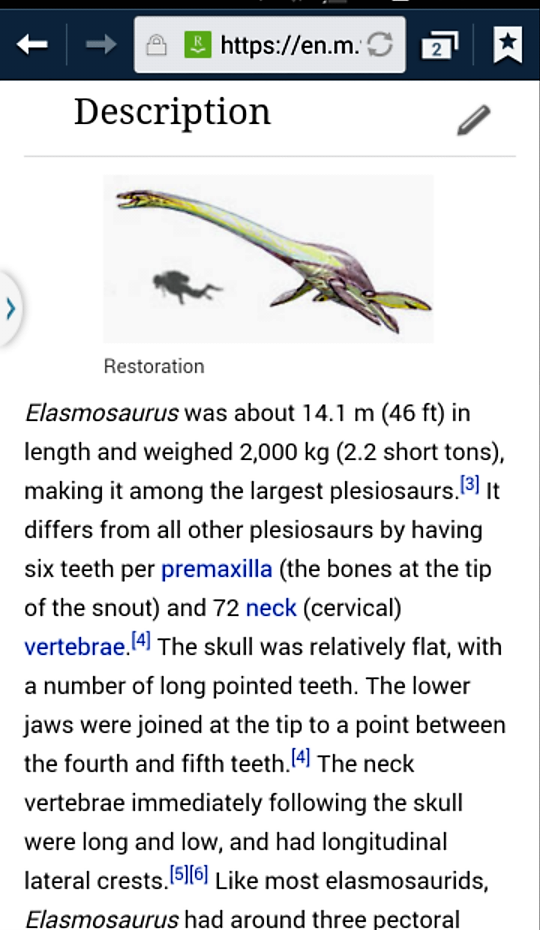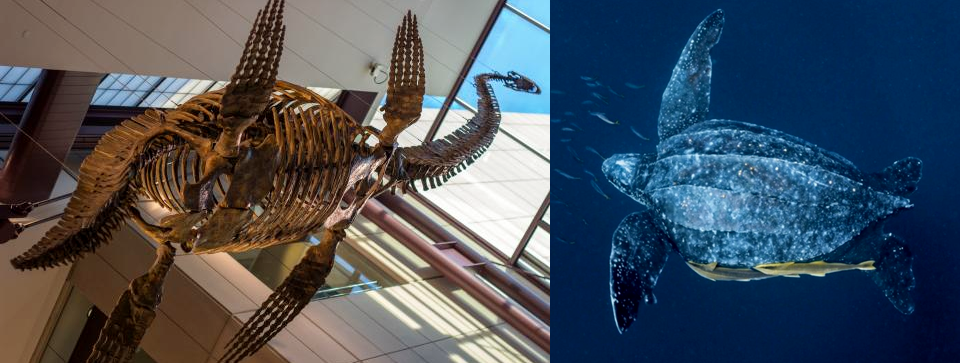So far, paleontology-wise, I’ve delved into and presented my personal (and at times groundbreaking) theories on the functionality of long necks on plesiosaurs (and how they used these lengthy appendages to “graze” on schools of unsuspecting fish), how plesiosaur/pliosaur flippers all moved simultaneously through the water (albeit in different planes of motion), and the reason for the hypocercal tails we see in many species of mosasaur (not to mention Ichthyosaur) which allowed them to surface/spout more easily.
Today, I’m going to address a weighty matter (pun intended). It’s something that irks me on a regular basis: the seeming inability of many members of the scientific community to correctly calculate the mass of a given marine animal. Mind you, I’m not talking about being 100% precise (an obvious impossibility for a creature known only by skeletal remains), but for the love of God, people, try and come a little bit close, will you?
There are many out there that are guilty of this seemingly rampant “crime”. I’ve seen 60-foot Megalodon sharks calculated at 30 tons (scaled up from a basking shark a 56-footer would weigh approx. 56-57 tons) would be more accurate) and 50-foot Mosasaurs listed at 5.5 tons (try 20). Even noted paleontologist Richard Forrest has stated on his site that a 20-meter pliosaur (65+ feet) would weigh in the realm of 20 tons (“around the size of a sperm whale”). (How big was Liopleurodon #3 – Plesiosaur site) For those not in the know, pliosaurs and great whites were/are comparable in terms of mass at a given length. That said, Forrest’s 21-meter pliosaur would actually have weighed around 64 tons – more than three times the figure listed, and would have indeed been comparable to an extant sperm whale (Physeter macrocephalus).
The figure that offends me most, however, is the stated weight for Elasmosaurus platyurus. Per Wikipedia (see insert), this 46-foot plesiosaur is listed at 2.2 short tons.

That’s completely ridiculous and I’ll tell you why. The largest recorded Anaconda was 17 feet long and weighed 215 lbs. Scaled up to 46 feet that same snake would weigh over 4,200 lbs – nearly the same weight Elasmosaurus is credited with. No massive, tuna-shaped body, no large, muscular flippers – just a snake. And saying a serpent is the same weight as a plesiosaur of similar length is, to me, incredulous. Green anaconda length & weight
When calculating the weight of an extinct animal, one tool I find useful as a gauge is to scale up (if possible) an extant species with a similar build. For example, mosasaurs and crocodiles are generally of a like structure (sans blubber). Thus, one can effectively upscale a Nile crocodile (Crocodylus niloticus) to get the approximate weight of a Tylosaurus (for example).
In the case of an Elasmosaurus, however, our best bet is a sea turtle. That may sound like a stretch (neck?), but keep in mind, when plesiosaurs were first discovered they were described as a turtle shell with a snake threaded through it. Now we can’t use just any sea turtle; some are just too girthy. Our best choice is a leatherback (Dermochelys coriacea). This modern day marine titan is proportionately slimmer than many extant chelonians, and with its lack of a bony shell is our best possible choice for a mass-to-mass matchup.

Before I get into numbers, let me address the inevitable naysayers. There are those who will undoubtedly spout that a sea turtle’s body design is far broader and more massive than a plesiosaur’s, but we’re not talking about using an Archelon (which would be). As can be seen by comparing photos of a living leatherback with a fossil reconstruction of an elasmosaur, these marine reptiles were not slim and slender. They were comparable in bulk – massively constructed animals with deep bodies and powerful muscles – not to mention possessing a layer of blubber that added to their overall mass.
I’ve taken the liberty of drawing an anatomically accurate outline of a leatherback turtle and then overlaid it with an elasmosaur’s body. As you can see, the overall body platform is surprisingly similar; both possess a fusiform design to reduce water resistance. You will also note that, with its reduced hind flippers and almost nonexistent tail, the turtle is considerably less massive than the plesiosaur, even sans the extinct marine reptile’s long and heavily-muscled neck. I estimate that, given its large rear flippers, tail, and fishing-rod-neck, a long-necked plesiosaur would be approximately 35-40% heavier than a leatherback turtle of the same overall body/trunk size.
Now let’s get to the numbers: Elasmosaurs are calculated as having necks as long as their entire bodies (50% of overall length). That would mean the 46-foot specimen quoted in Wikipedia would have a trunk and tail length of approximately 23 feet. Of those 23 feet I calculate approximately 7 feet as being tail, with the actual body the remaining 16 feet.
Going once more to Wikipedia: (https://en.wikipedia.org/wiki/Leatherback_sea_turtle) – Leatherback turtles from the Caribbean are calculated to have an average weight of 847 lbs at a CCL (Curved Carapace Length) of 5.1 feet. Those from French Guiana are slightly less robust, weighing in at 748 lbs at the same CCL. Note: Measuring over the curve results in a slight increase in calculated length, but for our purposes we shall treat this as a straight line measurement. In truth, the actual numbers would be somewhat higher, but paleontologists have a notorious desire to be conservative, right?
Now, let’s upgrade both of our standardized leatherback’s proportions to that of the plesiosaur and scale up accordingly. With our Elasmosaurus having a CL (Carapace Length) of approximately 16 feet, that makes it 3.137 times the length, width, and height of the sea turtle. Using a standardized cubic formula, that means a leatherback of comparable size (16-foot carapace instead of 5.1 feet) would weigh approximately 26, 147 lbs (Caribbean) or 23,091 lbs (French Guiana), respectively. (Again, these are conservative measurements. If the turtles’ shells were measured in a straight line the numbers would be somewhat higher) Thus, we can state with relative confidence that, at a minimum, Elasmosaurus weighed between 11.5 and 13 tons, and not two.
But let us not forget the giant plesiosaur’s huge rear flippers, tail, and that long, thickly-muscled neck for which it is so well known. Adding 35%-40% to the aforementioned figure for these differentials means our little “Nessie” effectively (and, again, conservatively) tipped the scales at somewhere between 32,242 and 36,605 lbs. (approximately 16-18 tons). Even if we took away these “extras” the animal still weighed in at a minimum of 12 tons. This makes far more sense for a 46-foot-long, blubber-insulated, and partially warm-blooded pelagic predator.
IMHO, the Wikipedia Elasmosaurus page needs to be updated.**
Respectfully,
Max Hawthorne
** Update: shortly after the release of this article, the Wikipedia page featuring Elasmosaurus (https://en.wikipedia.org/wiki/Elasmosaurus) was updated. Any outdated references to the animal’s size – weight in particular – have been removed. It’s good to see that, after reading this article someone decided to take action…



